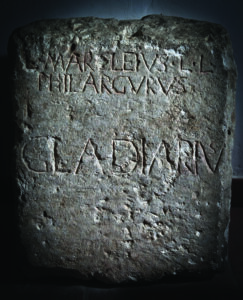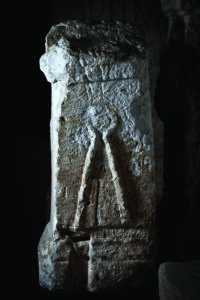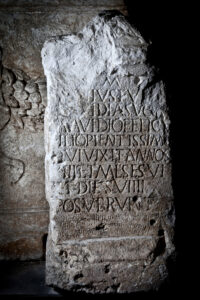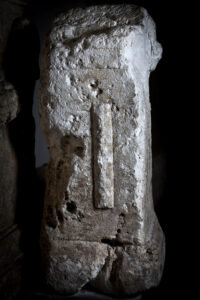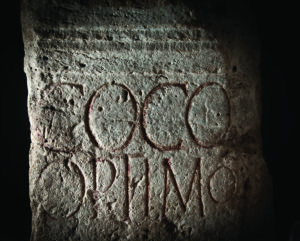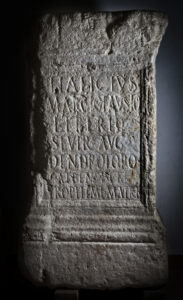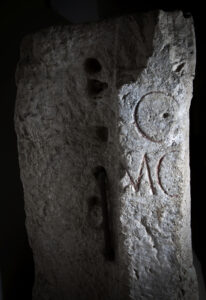TRADES
The material displayed also opens a glimpse into life daily, on economic activities and trades.
For example, the production of weapons, probably linked to a parenthesis linked to the civil wars period or the reference to transhumant pastoralism and production of wool and fabrics, which could be testified also from the toponyms Porta Fellonica, Fonte Fellonica, behind which we can see the activity of fullones (dry cleaners).
The representation of a spade and a hoe is a reference to Flora’s feasts and could attest the existence in Alba of a guild of gardeners.
The presence of a cook, probably a freedman, that he was managed to get rich with this activity to become seviro. He probably worked in the service of great families, not in Alba but in Rome, and then returned to his hometown and savored his own social rise.
26 – Limestone funerary altar, devoid of the top and trimmed for reuse on the left side. I-II century. A.D. (Church of S. Bartolomeo- Avezzano).
Halicius
Marcio Fausto
liberto
sevir(o) Aug(ustali)
dendroforo sic
Albensi et
Trophime matri.
On the right side (repainted with modern red paint):
Coco
optimo.
On the left side. (repainted with modern red paint):
[Coc]o
[opti]mo.
